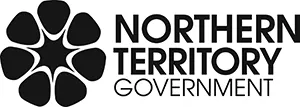Water science program
In 2023, the Northern Territory (NT) Government fast-tracked its existing science program to focus on evidence-based water management and sustainable development.
The program is partly funded by the Australian Government's National Water Grid Authority (NWGA).
Read more on the NWGA website.
It aligns with national guidelines and NT government priorities such as the:
- strategic plan - read on the Department of Lands, Planning and Environment website.
- Territory water plan - read on the water security website.
Current projects
Under the program, the following projects will be carried out to help manage water security and access.
A water allocation plan will be developed for the Adelaide River catchment.
Find out more about the plan.
Managed aquifer recharge (MAR) is a technique used to put extra water into aquifers for future use.
The project investigates whether it would work for a specific site in the Upper King River.
A research report will be developed along with an evaluation of the operational factors and risks of having a MAR at the site.
Read about the Upper King River managed aquifer recharge investigations on the NWGA website.
A desktop salinity study is a basic study that uses existing data to examine salt levels in a certain area. It looks at:
- where it is
- how much there is
- what effect it might have in a particular area.
The Western Davenport salinity study was carried out jointly with the National Centre for Groundwater Research and Training. It was completed in 2021.
Read about the risk of salinity due to irrigation developments in the Western Davenport Basin on the Territory Stories website.
Hydrostratigraphy is the study of rock formations specifically focusing on their water-bearing characteristics.
The project involves on-ground field investigations including:
- deep bore drilling programs
- pumping tests
- groundwater sampling
- analysis.
The aim is to better understand the underground water layers, their capacity, connections, and how water moves in and out of the aquifer.
This information will help improve the input to the computer model used to manage water resources for Western Davenport.
Read about the Western Davenport hydrostratigraphy on the NGWA website.
Water resource models are used to determine how much water can be taken from a water source without affecting it.
The updates will provide a better understanding of a particular water resource and inform how development opportunities are assessed in related areas.
There are 2 phases in this project.
Phase 1 - 2021 to 2025
Phase 1 involves improving the existing models with new monitoring data, high-tech aerial surveys, and drilling and sampling programs.
This will provide updated models and reports for the:
- Flora River
- Oolloo Dolostone or Lower Daly
- Daly Roper River
- Western Davenport.
Phase 2 - 2025 to 2026
Phase 2 involves improving the existing models with new monitoring data, remote sensing surveys, and drilling and sampling programs.
This will provide updated models and reports for:
- Koolpinyah Dolostone Aquifer and Berry Springs Dolostone Aquifer
- Flora River or Katherine River
- Ti Tree Palaeovalley Aquifer.
LiDAR is remote sensing technology that uses lasers to measure distances to objects and surfaces.
There are 2 phases in this project.
Phase 1 - completed in 2023
Phase 1 involved collecting high resolution topographic data for:
- Adelaide River
- Daly River
- Roper River
- Western Davenport.
Phase 2 - 2024 to 2025
Phase 2 involves collecting high resolution topographic data in the following areas:
- Koolpinyah Dolostone Aquifer and Berry Springs Aquifer
- Ti Tree Palaeovalley Aquifer
- Flora River and Katherine River.
This is to better understand how much water is needed by the ecosystem during the wet season, and see how much surface water can be collected without affecting the environment.
The outcome is digital elevation models for each of the focus areas.
More information
Project outcomes will be published on the Territory Stories website.
